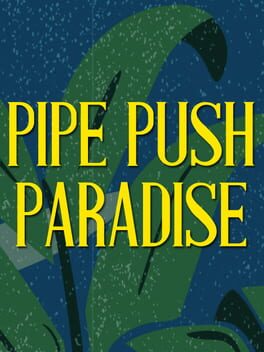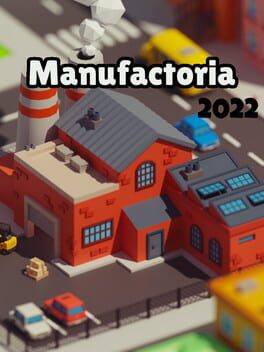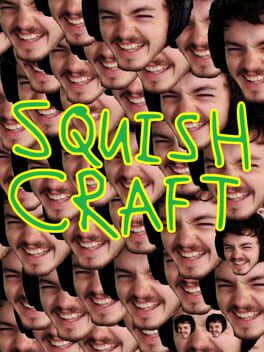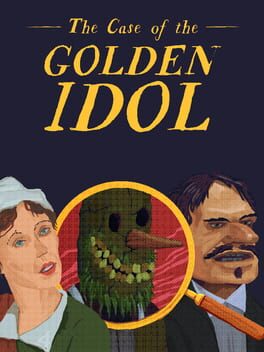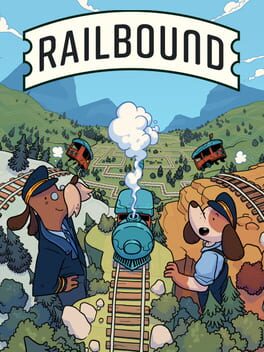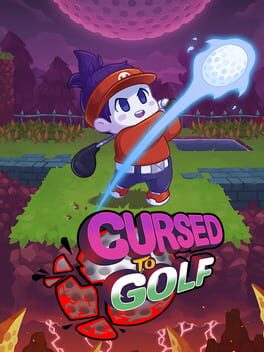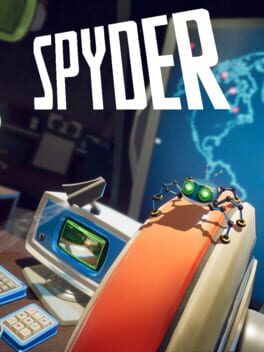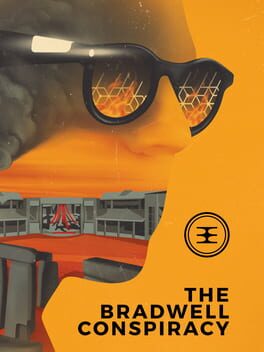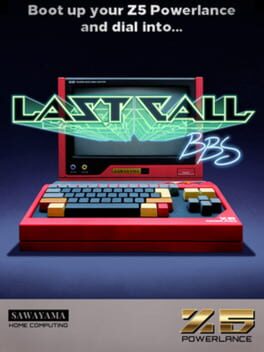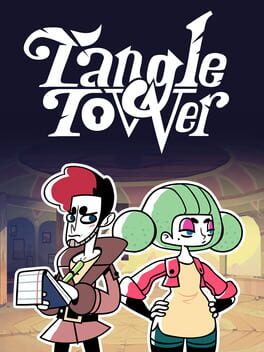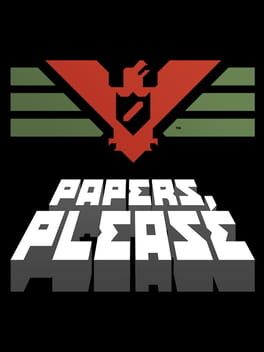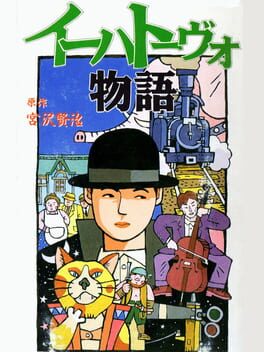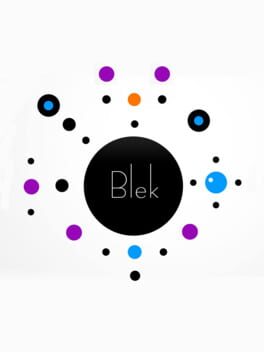tendog
BACKER
2018
This game has an odd difficulty curve, and unfortunately the area right after the intro area is filled with some of the hardest challenges in the game (actually i'm not totally sure about this because this is just how i played. never saw any sort of indication of areas gated based on completion though). You're not at all required to beat each area completely before you move on, but it might be wise to if you're stuck.
Twisting + pushing puzzles like PPP and Steven's Sausage Roll can easily get overwhelmingly difficult and I think a lot of that is just locking 3D motion to a weird layered 2D grid. PPP handled this pretty well but there were moments when the forced eagle-eye camera angle made it difficult to see what was positioned where.
Like someone else said here, once I was done with the main island, I was happy to leave it there. Each of the 5 or 6 main areas have a cool mechanic and the last puzzle was a really fun big finale.
Twisting + pushing puzzles like PPP and Steven's Sausage Roll can easily get overwhelmingly difficult and I think a lot of that is just locking 3D motion to a weird layered 2D grid. PPP handled this pretty well but there were moments when the forced eagle-eye camera angle made it difficult to see what was positioned where.
Like someone else said here, once I was done with the main island, I was happy to leave it there. Each of the 5 or 6 main areas have a cool mechanic and the last puzzle was a really fun big finale.
2022
Gosh. What a fantastic Zachlike! I played on/off for about 3 months, with a total of 72 hours of gameplay to beat every level in the game, and I was always looking forwards to playing more.
The core mechanic is incredibly simple: you have a tape of instructions that you can read from one end with scanners and print on the other end with stampers. Other than that, you just have conveyor belts, pipes (for intersecting paths), and most interestingly: goals and trash bins. Everything you create has to go out through one of these exits, and you have full control on where to place them on the square grid. This quickly leads to lots of possibilities!
It doesn't take long before you reach levels that ask you to do really simple tasks (reverse the tape, for example), that actually requires some clever tricks and lots more space and time than you might expect. Rarely do these tasks get too complicated that they can't be explained in a couple of sentences.
What's so amazing is that even though almost every level gives you the exact same tools and building space, each level feels like it's own mountain to climb.
The keyboard shortcuts take forever to get used to (I was still messing some of them up even at the end of my playthrough!) but they are so immensely useful in putting together and reshaping designs that once you get the hang of them, it will feel like you're a photoshop wizard employing a million shortcuts to whip up your next piece.
There is some level of plot happening in the background, but its fairly minimal and not at all necessary in understanding the gameplay. For the most part, I disconnected with it and just played for the puzzles.
And yes, the last puzzle is a doozy. But it's amazingly simple at its core and is such a great finale!
The core mechanic is incredibly simple: you have a tape of instructions that you can read from one end with scanners and print on the other end with stampers. Other than that, you just have conveyor belts, pipes (for intersecting paths), and most interestingly: goals and trash bins. Everything you create has to go out through one of these exits, and you have full control on where to place them on the square grid. This quickly leads to lots of possibilities!
It doesn't take long before you reach levels that ask you to do really simple tasks (reverse the tape, for example), that actually requires some clever tricks and lots more space and time than you might expect. Rarely do these tasks get too complicated that they can't be explained in a couple of sentences.
What's so amazing is that even though almost every level gives you the exact same tools and building space, each level feels like it's own mountain to climb.
The keyboard shortcuts take forever to get used to (I was still messing some of them up even at the end of my playthrough!) but they are so immensely useful in putting together and reshaping designs that once you get the hang of them, it will feel like you're a photoshop wizard employing a million shortcuts to whip up your next piece.
There is some level of plot happening in the background, but its fairly minimal and not at all necessary in understanding the gameplay. For the most part, I disconnected with it and just played for the puzzles.
And yes, the last puzzle is a doozy. But it's amazingly simple at its core and is such a great finale!
2022
Do you like the Chzo Mythos? Do you like Return of the Obra Dinn? Can I interest you in the Case of the Golden Idol?
Love games with a mystical power dropping into an unready society and falling into the worst person's hands. Captures that same "holy shit that's gnarly" gruesomeness from Obra Dinn with even more initially inexplicable situations to try and piece together the meaning of. Short but not too short, happy with where it went and where it ended. And what art direction! Never seen anything like it.
Love games with a mystical power dropping into an unready society and falling into the worst person's hands. Captures that same "holy shit that's gnarly" gruesomeness from Obra Dinn with even more initially inexplicable situations to try and piece together the meaning of. Short but not too short, happy with where it went and where it ended. And what art direction! Never seen anything like it.
2022
Had an absolutely wonderful time with this game. Although at it's core it's "just" a 3D adventure game, it has so many features unique (as far as I know) only to Tunic. Providing a digital game guide highly reminiscent of those found inside Game Boy games is cool. Having it written in a constructed language system so it's (at first) impossible to read, but possible to interpret is clever. Having the pages of this guide scattered throughout the world is genius. And it doesn't stop there, but in a game built of secrets it's more fun to let them stay secret.
I generally liked the combat, although I found that I had to rely on the most powerful weapons and lots and lots of dodging to get past the bosses, as parrying is not worth it most of the time (and can be a bit fidgety with the button combo requires). I also abandoned most of the unique weapons early on as they didn't quite hold up to the sword, and magic was extremely hard to come by, or requires saving up precious blue berries to try to consume mid-fight.
The ending (B ending) was refreshingly painless (unless you consider puzzles a pain but come on). I later watched someone complete the A ending and yeah wow, no thanks (for multiple reasons). I think the lore of the world is actually pretty remarkably compatible with the gameplay itself and was awesome to unravel. For example, the lore behind the Lost Echoes is quite interesting, and makes them an especially cool enemy concept.
And yeah, Tunic is absolutely beautiful. It plays on the isometric view so extremely well, the game simply wouldn't work any other way. I love the locations and the constant uneasy atmosphere that something taking place here is wrong.
So so so clever and wonderful. Probably my favorite game of 2022 as of yet.
I generally liked the combat, although I found that I had to rely on the most powerful weapons and lots and lots of dodging to get past the bosses, as parrying is not worth it most of the time (and can be a bit fidgety with the button combo requires). I also abandoned most of the unique weapons early on as they didn't quite hold up to the sword, and magic was extremely hard to come by, or requires saving up precious blue berries to try to consume mid-fight.
The ending (B ending) was refreshingly painless (unless you consider puzzles a pain but come on). I later watched someone complete the A ending and yeah wow, no thanks (for multiple reasons). I think the lore of the world is actually pretty remarkably compatible with the gameplay itself and was awesome to unravel. For example, the lore behind the Lost Echoes is quite interesting, and makes them an especially cool enemy concept.
And yeah, Tunic is absolutely beautiful. It plays on the isometric view so extremely well, the game simply wouldn't work any other way. I love the locations and the constant uneasy atmosphere that something taking place here is wrong.
So so so clever and wonderful. Probably my favorite game of 2022 as of yet.
2022
This review contains spoilers
Such a treat for fans of Witness's puzzle mechanics, felt like a 2D addendum to the game, with such lovely spritework and a zen atmosphere. The finale (Black ending) was spectacular, I wouldn't have minded even more of those types of puzzles.
Spoiler for White achievement:
The White (meta) puzzles were... mostly good. The orchard one is by far my favorite, and the ruins one was neat to spot, too. I think there were some flaws with the other ones, but the Mill one is pretty bad!
While I spotted the solar panels in the Mill matching the shape of the meta puzzle, I could not find anything on them and was a bit lost. When I finally looked up the answer and saw it involved something similar to the desert puzzles in the Witness, I was excited to see the tiles light up in the right spots, but I struggled to even make them out. It's a bit awkward to get different viewpoints of the panels and even when I did, the shading differences were so subtle I don't think I ever would have noticed them. Surprised this wasn't called out by any playtesters in development, it really stood out as bad design in a game packed with such careful attention to it otherwise.
Edit: It has been reported to me that you can simply walk onto the roof. How did I complete this game again
Spoiler for White achievement:
The White (meta) puzzles were... mostly good. The orchard one is by far my favorite, and the ruins one was neat to spot, too. I think there were some flaws with the other ones, but the Mill one is pretty bad!
While I spotted the solar panels in the Mill matching the shape of the meta puzzle, I could not find anything on them and was a bit lost. When I finally looked up the answer and saw it involved something similar to the desert puzzles in the Witness, I was excited to see the tiles light up in the right spots, but I struggled to even make them out. It's a bit awkward to get different viewpoints of the panels and even when I did, the shading differences were so subtle I don't think I ever would have noticed them. Surprised this wasn't called out by any playtesters in development, it really stood out as bad design in a game packed with such careful attention to it otherwise.
Edit: It has been reported to me that you can simply walk onto the roof. How did I complete this game again
2022
Great fun, so well-polished and simple to understand, hard to master. I think the difficulty of the main path is good if you're okay with running into a few tough ones, but the extra puzzles are where the real nasty ones can be found (I love the real nasty ones).
Some of the tougher levels had the issue of either being too complex to reasonably understand with the tools provided (slow-mo helps, but not enough in some cases) or easy to bypass the complexity by putting all the rails down where they need to go and fiddling with a couple directions to get it working, without having really understood what you were trying to achieve.
The music and art is lovely and somehow the little postcard at the end of each world was a nice enough incentive to want to see it through.
Some of the tougher levels had the issue of either being too complex to reasonably understand with the tools provided (slow-mo helps, but not enough in some cases) or easy to bypass the complexity by putting all the rails down where they need to go and fiddling with a couple directions to get it working, without having really understood what you were trying to achieve.
The music and art is lovely and somehow the little postcard at the end of each world was a nice enough incentive to want to see it through.
2022
Yeah it's alright!
I managed to beat it on my first run, which I'm okay with. It definitely wasn't easy, and probably having had played the demo made that a little more possible. Took about 6 hours total to complete.
I don't know if I just somehow missed it, but I didn't find out about spin until pretty late in the game, when I saw it on the controls menu. It's pretty crucial in the late game so I'm glad I came across it when I did.
This game is purportedly a rogue-like, but it doesn't do much to encourage multiple runs after you've beaten it, and in fact it might be discouraging to get sent straight back to the start without having much to show for it. I played Slay the Spire earlier this year, so the bar was set pretty high for rogue-likes, but even then, there are some basic elements I would've liked to see, such as having to choose between awards from trophies, more randomization/paths, outfits being special rewards and not just attained incrementally after beating bosses.
It would've been cool if the outfits had benefits/drawbacks. You only get the chance to change them at each shop, so it seems like the perfect opportunity for that. Imagine if the Spicy outfit made every ball inflamed, but also made it so you could never use frost, and vice-versa with the Frozen outfit. I can easily think up a bunch more, but already that sounds like it would add more strategy and planning.
Golf-rogue-like is a really clever idea for a game, and it was kinda well executed, but kinda unambitious too. I still had a lot of fun, anyways.
I managed to beat it on my first run, which I'm okay with. It definitely wasn't easy, and probably having had played the demo made that a little more possible. Took about 6 hours total to complete.
I don't know if I just somehow missed it, but I didn't find out about spin until pretty late in the game, when I saw it on the controls menu. It's pretty crucial in the late game so I'm glad I came across it when I did.
This game is purportedly a rogue-like, but it doesn't do much to encourage multiple runs after you've beaten it, and in fact it might be discouraging to get sent straight back to the start without having much to show for it. I played Slay the Spire earlier this year, so the bar was set pretty high for rogue-likes, but even then, there are some basic elements I would've liked to see, such as having to choose between awards from trophies, more randomization/paths, outfits being special rewards and not just attained incrementally after beating bosses.
It would've been cool if the outfits had benefits/drawbacks. You only get the chance to change them at each shop, so it seems like the perfect opportunity for that. Imagine if the Spicy outfit made every ball inflamed, but also made it so you could never use frost, and vice-versa with the Frozen outfit. I can easily think up a bunch more, but already that sounds like it would add more strategy and planning.
Golf-rogue-like is a really clever idea for a game, and it was kinda well executed, but kinda unambitious too. I still had a lot of fun, anyways.
2020
Secret Agent Chibi Robo, except it's episodic and the game gives you waaaay too much help. Stop telling me where to go and what to do! The game would be 100x better if you could play without the checkpoint icons and task indicator. Such a simple fix too. I'm going to play a bit more and see if it starts backing off on the hand-holding, but I have a feeling it won't.
Update: nope. Eyewateringly linear. You go to the place the marker tells you, press the button the game tells you, rinse, repeat. What a waste of a cool concept. Not worth playing.
Update: nope. Eyewateringly linear. You go to the place the marker tells you, press the button the game tells you, rinse, repeat. What a waste of a cool concept. Not worth playing.
2022
Like many a Zachtronics game before, Last Call BBS has that secret ingredient to create a great puzzle format: arbitrary limitation.
Perhaps intentionally, the computer you are using only has enough disk space to download 7 programs, most of which have their own limitation. For ChipWizard and Food Court, the limit was simply workspace, a pretty common trope for Zachtronics, although for Food Court there are two ways space is restricted. For X'BPGH, interestingly, it was time (as displayed through stages of growth). There was also an instruction limit, but I don't think I ever ran out of space for instructions.
For the others, there might not be any clear limitation. Kabufuda cards existed before Last Call BBS, but I don't know if Kabufuda Solitaire existed. The free spaces certainly had increasing limits with higher difficulty. Dungeons & Diagrams had restrictions for block placement, but that's not really unusual for a logic puzzle (in fact a lot of the rules carry over from a logic puzzle known as Tapa). Steed Force could be considered to have a quite limited variety of tools for painting Gundam-like figures. HACKMATCH might not even qualify.
I'd be remiss not to mention some of these games had their first appearance in a previous Zachtronics game. A nearly identical version of Kabufuda Solitaire was present in Eliza. A fairly similar version of HACKMATCH in EXAPUNKS. ChipWizard's first incarnation was KOHCTPYKTOP, released all the way back in 2009 as a flash game. There may be others that I don't know about.
And I think the narrative that played out through memos from the relative who had donated the Z5 Powerlance to the player hints towards a past where arbitrary restrictions were not an option, they were reality. Graphics were limited to smaller resolutions, smaller budgets, smaller memory allocation, and smaller, closer-knit (more closely knit?) communities who came together to play these games and just chat.
The world's a lot bigger than it was when Zachtronics began. Things move faster. LC makes you wait when downloading a game, although the files of the game were all loaded up upon booting up Last Call BBS on Steam. It might've taken you less time to download LC than it took to download any game within it.
I don't think Zach Barth was trying to communicate there is no place for Zachtronics anymore, or that he was out of ideas. I think he just had a good idea of where he wanted to stop.
Perhaps intentionally, the computer you are using only has enough disk space to download 7 programs, most of which have their own limitation. For ChipWizard and Food Court, the limit was simply workspace, a pretty common trope for Zachtronics, although for Food Court there are two ways space is restricted. For X'BPGH, interestingly, it was time (as displayed through stages of growth). There was also an instruction limit, but I don't think I ever ran out of space for instructions.
For the others, there might not be any clear limitation. Kabufuda cards existed before Last Call BBS, but I don't know if Kabufuda Solitaire existed. The free spaces certainly had increasing limits with higher difficulty. Dungeons & Diagrams had restrictions for block placement, but that's not really unusual for a logic puzzle (in fact a lot of the rules carry over from a logic puzzle known as Tapa). Steed Force could be considered to have a quite limited variety of tools for painting Gundam-like figures. HACKMATCH might not even qualify.
I'd be remiss not to mention some of these games had their first appearance in a previous Zachtronics game. A nearly identical version of Kabufuda Solitaire was present in Eliza. A fairly similar version of HACKMATCH in EXAPUNKS. ChipWizard's first incarnation was KOHCTPYKTOP, released all the way back in 2009 as a flash game. There may be others that I don't know about.
And I think the narrative that played out through memos from the relative who had donated the Z5 Powerlance to the player hints towards a past where arbitrary restrictions were not an option, they were reality. Graphics were limited to smaller resolutions, smaller budgets, smaller memory allocation, and smaller, closer-knit (more closely knit?) communities who came together to play these games and just chat.
The world's a lot bigger than it was when Zachtronics began. Things move faster. LC makes you wait when downloading a game, although the files of the game were all loaded up upon booting up Last Call BBS on Steam. It might've taken you less time to download LC than it took to download any game within it.
I don't think Zach Barth was trying to communicate there is no place for Zachtronics anymore, or that he was out of ideas. I think he just had a good idea of where he wanted to stop.
2019
Perfect little game. The script, voice acting, character art, background art, music, sound effects, are all absolutely wonderful and genuinely charming. The puzzles were generally good too, if a little bit samey/simple sometimes.
The characters were all so well defined and unique which made every little interaction with them a delight. Everyone had their own theme music, which was not only amazing but suited each character to a tee.
Won't go into the story too much as to avoid making this spoilers, but it was an actually pretty reasonable, well-dressed mystery, with bits that could be pieced together before the game explicitly stated them.
As a huge Layton fan, I love this game, some aspects even moreso than with any of the Layton games. I think it fell slightly flat on the puzzles, which is Layton's greatest strength (besides great art/music direction), but had a much more cohesive story and fun dialogue than anything from Level-5.
Highly recommend to any fans of detective stories looking for a pleasant, low-stress casual game.
The characters were all so well defined and unique which made every little interaction with them a delight. Everyone had their own theme music, which was not only amazing but suited each character to a tee.
Won't go into the story too much as to avoid making this spoilers, but it was an actually pretty reasonable, well-dressed mystery, with bits that could be pieced together before the game explicitly stated them.
As a huge Layton fan, I love this game, some aspects even moreso than with any of the Layton games. I think it fell slightly flat on the puzzles, which is Layton's greatest strength (besides great art/music direction), but had a much more cohesive story and fun dialogue than anything from Level-5.
Highly recommend to any fans of detective stories looking for a pleasant, low-stress casual game.
2013
Incredibly tense, difficult, and often hopeless. There is such a sharp touch of style and grace to everything in the game that it feels like it was carefully crafted over years by a brilliant team, but it was mostly Lucas Pope in a single year.
I have played many times and have seen maybe half the endings, and hardly scratched the surface of testing all the individual little scenarios that affect the story.
You will think about every move you make. You will be given too many things to think about. You will make mistakes, and curse yourself. You will sit on your hands and be unsure of what choice to make, while the clock hands continue their trip around and around...
I have played many times and have seen maybe half the endings, and hardly scratched the surface of testing all the individual little scenarios that affect the story.
You will think about every move you make. You will be given too many things to think about. You will make mistakes, and curse yourself. You will sit on your hands and be unsure of what choice to make, while the clock hands continue their trip around and around...
1993
2013
Something magical happened with Blek.
For starters: Blek is a puzzle game with a mechanic that could only really be done on a touchscreen: the exact motion of the line you draw out is repeated over and over, and the goal is to use that repetition to collect pellets in the level while avoiding obstacles. It's so simple and so well suited to a touchscreen, and it makes a genuinely great mobile puzzle game on its own.
Now the magical bit: the game is broken. Some of the levels don't display properly on modern screens, which occasionally makes the intended solution impossible. For example, in the hint for level 60, there is an indicator suggesting you draw a portal - which is something you can do btw, game never lets you know that outside of hints lol - draw the portal OUTSIDE of the screen. You can just see the edge of the indicator.
Now with some games, this breaks them. In our screen filled hellscape I think everyone has experienced something only partially displaying onscreen, making it untouchable. But miraculously, for Blek, this invites for some truly clever innovation. If you look up Level 60 solutions on YouTube (like I did once hitting this roadblock), you will find tons of different approaches: reversing the motion of the line by bouncing off the wall, then entering the portal, drawing an extra long portion to reach over to where the portal would have come out, some strange worm-thing that inches back and forth, deftly wrapping around obstacles. It's BEAUTIFUL. And sometimes this happens naturally in the game, and the game is totally cool with it. To see it happen mistakenly and have players to overcome the odds and come up with new approaches, that's magical. It's so uncommon for a puzzle game to allow for this much variety in solutions and it's wonderfully refreshing. This game doesn't feel a day old.
So Blek devs, please never fix your game, I love it as it is.
For starters: Blek is a puzzle game with a mechanic that could only really be done on a touchscreen: the exact motion of the line you draw out is repeated over and over, and the goal is to use that repetition to collect pellets in the level while avoiding obstacles. It's so simple and so well suited to a touchscreen, and it makes a genuinely great mobile puzzle game on its own.
Now the magical bit: the game is broken. Some of the levels don't display properly on modern screens, which occasionally makes the intended solution impossible. For example, in the hint for level 60, there is an indicator suggesting you draw a portal - which is something you can do btw, game never lets you know that outside of hints lol - draw the portal OUTSIDE of the screen. You can just see the edge of the indicator.
Now with some games, this breaks them. In our screen filled hellscape I think everyone has experienced something only partially displaying onscreen, making it untouchable. But miraculously, for Blek, this invites for some truly clever innovation. If you look up Level 60 solutions on YouTube (like I did once hitting this roadblock), you will find tons of different approaches: reversing the motion of the line by bouncing off the wall, then entering the portal, drawing an extra long portion to reach over to where the portal would have come out, some strange worm-thing that inches back and forth, deftly wrapping around obstacles. It's BEAUTIFUL. And sometimes this happens naturally in the game, and the game is totally cool with it. To see it happen mistakenly and have players to overcome the odds and come up with new approaches, that's magical. It's so uncommon for a puzzle game to allow for this much variety in solutions and it's wonderfully refreshing. This game doesn't feel a day old.
So Blek devs, please never fix your game, I love it as it is.
